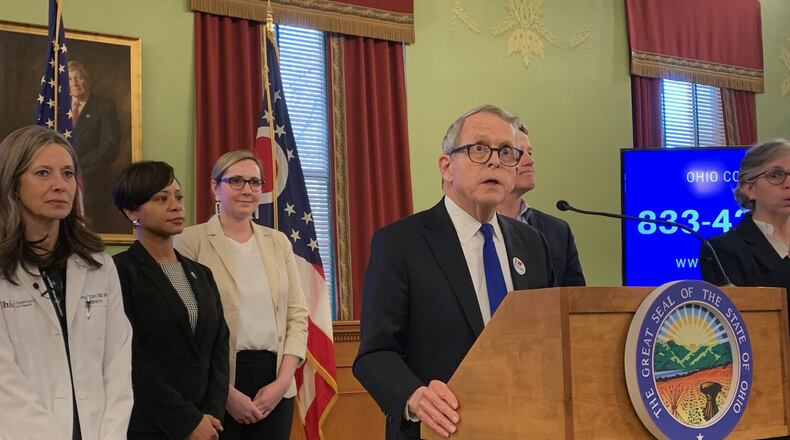“We will work with school leaders to make sure they have the flexibility that they need,” DeWine said.
RELATED: State: Casinos must comply with directive on large gatherings
Ohio will also send a request to the Trump administration for additional flexibility on federal rules and regulations and ask for access to the national stockpile of personal protective equipment — PPEs — worn by first responders, doctors and nurses when caring for infectious patients.
“We’ve known all along there are shortages (of PPE,)” said Ohio Department of Health Director Dr. Amy Acton on Friday. Healthcare workers are taking measures to conserve, Ohio has a stash of PPE and the state will get some from the national stockpile, she said on Friday.
DeWine also warned that daycare centers may have to be closed to help slow the spread of coronavirus so parents should prepare. He also recommended that families able to pull children from daycare now should do so.
Ohio Chancellor of Higher Education Randy Gardner said universities would pursue policies to move nearly all students out of dormitories, except those who are former foster care youths, international students and those who have no place to move to. Ohio State University this week told students to begin moving out of its residence halls.
The latest numbers of confirmed cases in Ohio rose to 13: eight men, five women, ranging in age from 34- to 66-years-old. No one had died from the coronavirus in Ohio.
The latest confirmed cases include members of a family in Butler County.
The Butler County General Health District on Friday announced that four of seven members of a family tested for coronavirus received positive results. The four who tested positive are quarantined at home, two awaiting test results are quarantined at home and one awaiting a result is in a local hospital.
Jenny Bailer, the health district’s director, said five of the family members are in their 30s and two are in their 70s. Officials said they are not classifying the cases as the result of community spread, and they’re working to learn more about how the virus was contracted.
DeWine had a message for Ohioans who are hoarding toilet paper and other supplies. “I would tell people to be prudent. We’re all in this together. If you go in there and wipe out a whole shelf of whatever something is, it’s probably not helpful to your friends,” the governor said.
RELATED: Testing for COVID-19 not available at Clark County Health District
Dr. Acton said numerous interventions are being taken now to slow the spread of the virus so that Ohio’s health care system isn’t overwhelmed with a caseload spike.
“Somebody has this famous quote — on the front end of a pandemic you look a little bit like an alarmist, you look a little bit like a Chicken Little, the sky is falling. And on the back end of a pandemic, you didn’t do enough. That is your fate in my world. That will be the fate of all of this because whenever a pandemic has come and gone or any infectious disease, a preparedness also has an end evaluation,” Dr. Acton said. Learning from previous pandemics informs what to do in future ones, she said.
Dr. Acton said there are four simple rules of what’s being implemented now:
— if you’re sick, stay home and isolate.
— if someone in your household is sick, you stay home too.
— practice social distancing.
— closing schools.
Ohio law gives the state Department of Health extraordinary powers when it comes to quarantine and isolation and the preservation of life and health. The state department as well as local health districts can rely on a long list of authorities, including police officers, to enforce quarantine and isolation orders.
Ohio has 114 local health departments that work in concert with state and federal public health authorities. Temporary boards of health were first established to respond to cholera epidemics in the 1830s in Ohio.
Trusted sources for the latest coronavirus info:
Ohio Department of Health, 833-4-ASK-ODH, coronavirus.ohio.gov
Centers for Disease Control and Prevention, cdc.gov/coronavirus
Coronavirus: What can you do to prevent it:
Wash your hands often with soap and water for at least 20 seconds and dry them with a clean towel or air dry them.
Use alcohol-based hand sanitizer if soap and water are unavailable.
Cover your mouth with a tissue or sleeve when sneezing or coughing.
Avoid touching your face with unwashed hands.
Stay home when you are sick.
Avoid contact with people who are sick.
Clean high-touch areas, such as doorknobs, light switches, bathroom fixtures and tables, everyday.
Avoid mass gatherings.
Sources: CDC, Ohio Department of Health

